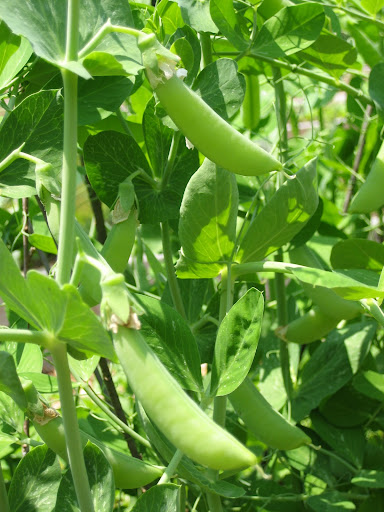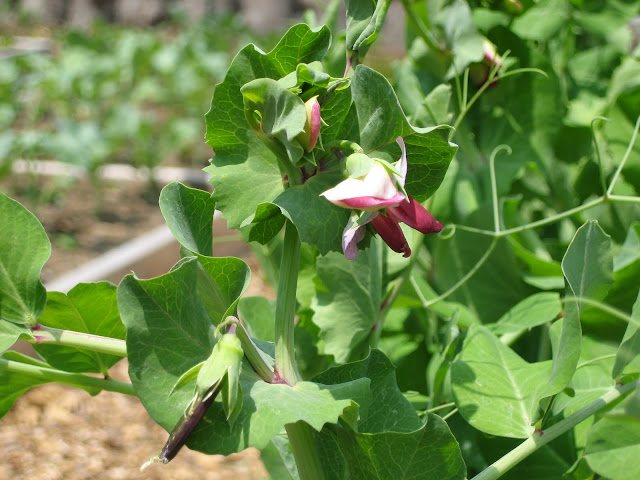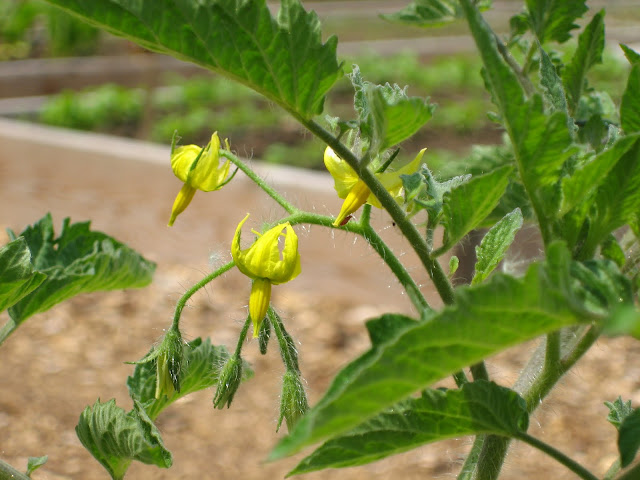Well, I guess we went straight from March into August. I'm actually sitting inside now because it is just too hot out there. And too humid. I guess this a good thing because up until now I was too busy to post anything.
The farm is looking quite nice these days and I am thankful for the visitors that come by just to take a peek and maybe chat a little. Please keep 'em coming, but do know that if I start moving, it doesn't mean I don't want to keep talking, it's just that I've got things to do. But I can walk and talk at the same time, so if you've got legs, use them and we'll be fine. Other than that, it is also just worthwhile to sit for a bit and take it all in.

Yes, how these things have grown! The summer squash in the foreground is so big it's prematurely shading out the spinach and radishes underneath. There's three varieties in there: Magda, a cousa-type squash (of Lebanese origin) that produces chubby grey green squash that are slightly nutty and rich in flavor. They are in fact my favorite. Next to them is Zephyr, one of the few hybrids I am growing this year, but it is so worth it. Their fruit is bi-color, yellow on top and spring green at the base. Such a pretty little squash. Last is an old standby, Costata Romanesco, an Italian heirloom. This squash is know for its superior flavor and classic zucchini looks. You don't often find this variety for sale in the US because it has been surpassed by more productive varieties. Even I admit to not having grown it myself until this year. But I figured, why not grow it and see for myself how it does and how it tastes. I see little flower buds on the plants...
In back of the squash are the peas. In the past week or so they gone from being about 3 1/2 feet high to being taller than me (I'm 5 feet tall). These are Sugar Snap peas, the variety that made them famous. They are just flowering now, but I do have Sugar Ann peas that are ready.

These are them. Also a snap pea, meaning you can eat the pod and all, they are a full week earlier than the Sugar Snaps and I think some years they even taste better. The hard part about peas is waiting until they have reached the perfect level of fatness. Too skinny and they are not as sweet. Too fat and they are tough and stringy. Usually my first pea of the season is just under perfection because I just can't wait. It isn't until about the third or fourth (handful of) peas that I am able to summon the strength to restrain myself. Along with driving a tractor and staking a thousand tomatoes, these are the things you learn when apprenticing at a farm - how to pick the perfect pea.

And speaking of peas, remember the dwarf blue variety that was just coming up in April? Well now they've started flowering! They are beautiful, I have to say, but I wonder if the peas taste good? I'll know in a couple of days! At the very least I could use the flowers in a spring mesclun mix, but I'll give them a chance to impress me first. There's a small pod there on the bottom left. I was curious so yesterday I pulled off a shriveled flower after it bloomed and there was a tiny pea pod that was actually mostly green. Today it is a deep deep purple. In two more days, who knows?

In another area of the garden, the first tomato flowers are coming on. This is an early variety called Moskovitch (there's another Russian-themed variety out there called Cosmonaut Volkov, what is that all about?) These first flowers may or may not produce fruits, but it's still a sure sign that real summer is on the way. That and the basil is almost big enough to harvest.
And finally, a few words about compost and soil. Visitors to the farm have asked me where I got the soil for the raised beds. The short answer is from
Croswell Enterprises in Kingston/Marbletown. They were kind enough to give me the contractor's price on my 32 yards of soil, which is good because we needed the discount. They handily delivered it to the farm in a dump truck and it was all shoveling from there. So far it has worked out well, but I am finding I need to do a little more fertilizing than I am used to (of course with an all natural organic fertilizer mix, and by the way, I normally do very minimal fertilizing to none at all, even a "normal amount" is more than I am used to). Perhaps this is dues to the coarse texture and the raised beds it is in (read: well drained, a good thing in this season, but still might let some nutrients out with all the water). The amazing thing to most visitors is how weedless the farm is. Believe you me this has nothing to my growing skills, it is all about the soil. Apparently the Croswell soil is weed free. I don't know how they do it, but I thank them for it.
As for the rest of the beds I, with some help from Rebecca Martin and my dear husband Daniel, shuttled about 10 yards of composted horse manure from
Frog Hollow Farm in Esopus. They kindly loaded it into a borrowed pickup truck (thanks Chiz from Heart Street!) with a front loader, but on the delivery end, once again it was all shovels and a lot of grunting after about the fifth truckload. You can't beat free, fully composted horse manure to begin with, but this was primo stuff - full of worms and with no smell whatsoever. In addition the owner of the farm, Nancy Rosen believes in natural horse care and happened to be a former member of the farm I managed in Gardiner. She doesn't have to share her giant pile of poop with me, but she does. Thanks Nancy!